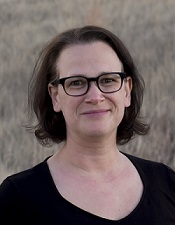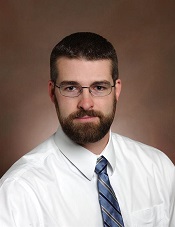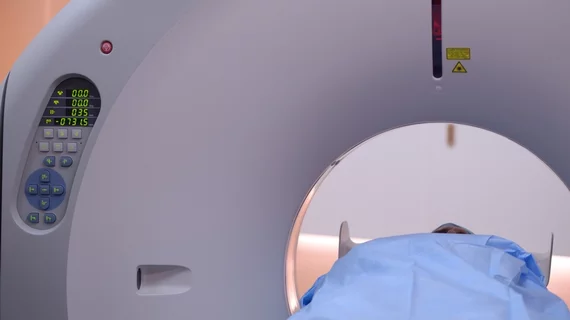Q&A: Medical physicists explain why it’s time to stop patient shielding in radiology
It surprised some imaging professionals when a recent analysis published in the American Journal of Roentgenology called for the decades-old practice of patient shielding during medical imaging examinations to come to an end. To learn more about the proposal, Radiology Business spoke with that article’s two co-authors, Rebecca M. Marsh, PhD, and Michael Silosky, MS, who are both medical physicists at the University of Colorado School of Medicine in Aurora, Colorado.
Read below for the full conversation:
Is patient shielding a topic that has been on your radar for a long time now?
Michael Silosky: Our interest developed over the last five years or so, mainly based on conversations we had with other healthcare professionals and physicists. For example, we have some technologist training programs in the area, and those students occasionally visit our facility. We typically get a lot of questions about patient shielding during x-rays, and one student asked me specifically what difference it makes if we are already collimating. I replied that it makes very little difference, or none at all, and the representative from the training program was taken aback that I said that. We spent some time talking about it, and I realized how ingrained the practice is into technologist training. It’s at odds with how the medical physics community views the subject, and it started making me want to look into it a bit further.

What is the biggest argument in favor of abandoning the practice of patient shielding?
Rebecca M. Marsh: I want to start my answer by reminding everyone that the overarching goal of any diagnostic imaging is to generate images that can guide the clinical care of the patient. We have to look at patient shielding in that context. The single biggest argument in favor of abandoning the practice is that it provides no benefit to the patient, but increases the risk that we’ll fail to meet that underlying goal of producing a quality image.
Patient shielding increases the risk that an exam will need to be repeated—which means additional radiation exposure—or that the image quality will be degraded. What’s even more problematic is that shielding can cover up anatomy the physician may need to see. If there were no benefits and no associated risks, then one could argue that patient shielding doesn’t harm anyone. But there are a lot of things that can happen, and we need to address the risks associated with this practice.
When you speak with other professionals that know a lot about patient shielding, do you find that they tend to agree or disagree with you?
MS: If we’re speaking with other medical physicists, it seems that everyone is on the same page. It’s very different when speaking with other healthcare professionals. Opinions are really mixed when it comes to technologists—there are some who are supportive, who say our arguments make sense, and there are those who are strongly opposed. People tend to respond very emotionally about this.
RM: It’s worth mentioning that we’ve implemented this at the institution where we both work. So we were able to talk it over with nursing staff, technologists, radiologists and other physicians. Deciding to move forward and not shield patients has generated a lot of conversations, and we have received a lot of good feedback about the best way to do this.

If a facility chooses to not use patient shielding, what would providers need to change in their daily practice to ease any potential patient concerns?
RM: The first big thing is education. Like I said, we talked to a lot of people about this before we decided to implement. We even brought in physicists and technologists from other sites to make it a collaborative process. The other big thing is developing a list of F.A.Q.s based on questions stakeholders have received over the years when it comes to patient shielding. We worked with everyone at our institution on how to answer certain questions. We also provide support through a “Dial a Physicist Hotline,” which allows the schedulers and technologists to call and ask a representative—usually, me—any questions they may not feel comfortable answering.
MS: Also, when our patients arrive in the radiology department, we talk to them about it right away during their introduction to the exam. As the technologist is going over the basics of the exam with the patient, they explain why we aren’t shielding. We let patients know that we are doing this because we believe it is best for their care and not out of negligence.
You note at the end of your analysis that technologists should still be allowed to provide shielding in certain circumstances. Can you detail an example of such a scenario?
RM: As we know, patient care doesn’t always consist of ideal circumstances. Even now, under our new policy, it may be appropriate to offer shielding because the patient refuses to undergo a medically indicated imaging exam without it. Imagine a pregnant patient shows up in the ER with a suspected pulmonary embolism. We know that shielding the patient’s abdomen has an associated risk, but if the patient is anxious and refuses to have the scan without the shielding, in this case, the benefit of having the exam outweighs the risk of using patient shielding.
Since your analysis was published online, it has generated a fair amount of discussion. Do you have any thoughts about the back-and-forth conversations you two have sparked?
RM: I think everyone involved in this conversation wants to do what is best for patient care, even if there is a bit of disagreement about what that might be. We are all on the same side. What we are trying to do is view the issue of patient shielding in the context of today’s technology and scientific knowledge.
The full analysis for the American Journal of Roentgenology can be read here. Prior Radiology Business coverage of this subject can be read here.

